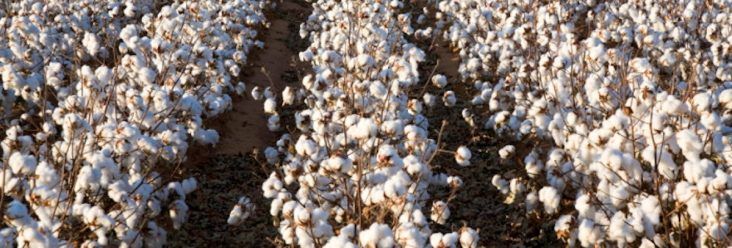Arkansas State Plant Board will take a re-vote on potential dicamba policy
by June 21, 2017 6:08 am 560 views

ripe cotton in field ready for harvest
The Arkansas State Plant Board has received more than 50 complaints about drift from the dicamba herbicide in 2017, and the board voted 11-3 to severely restrict its use but to still allow limited applications. Due to a procedural error, a re-vote will be held at 10 a.m. on Friday, Arkansas Agricultural Department Communications Director Adriane Barnes told Talk Business & Politics. How the error occurred was not released.
“There was a miscount of how many voting members were present at the meeting, either by phone or in person. There will be a complete re-vote on Friday for all measures considered. There is no current new policy at at this time,” she said.
Dicamba drift complaints have risen significantly this year and it even interfered with a study of how dicamba drift impacts soybean crops in Mississippi County, according to a report by the University of Arkansas Division of Agriculture Research Extension. Drift infiltrated 100 acres being used for research near Keiser. The herbicide is primarily used on cotton plants in Northeast and eastern Arkansas, weed specialist Dr. Tom Barber noted in the report. Cotton is often planted in near proximity to soybean fields and the herbicide can cause damage to that crop, he said.
“As we have seen in our research, a very low rate of dicamba can cause soybean leaves to cup,” Barber said. “There will not be any yield loss at this low of a rate, but you will see the symptoms on the beans.”
In 2016 there were 32 dicamba drift-related complaints filed with the ASPB. The chemical is highly regulated in Arkansas because of how sensitive soybeans are to it. The weather may have had something to do with some improper applications by farmers, Barber said.
“Bad weather makes it very difficult to get in the fields and make proper applications,” Barber said. “A lot of farmers or applicators may have sprayed-in conditions that were not ideal for spraying, but were ideal for drift, but we rely on the ASPB to make these final determinations.”
Because of high winds during the day, Barber said he’s been told some farmers and applicators may have chosen to spray at night when there was no wind. Temperature inversions are common when there’s no wind at night, holding the volatile spray above the canopy, he said. Drift can then occur when wind returns in the morning.
Physical drift accounts for at least 80-90% of all the dicamba injured fields that he’s observed, Barber said. While improper application may account for much of the reported dicamba drift, Barber said most farmers and applicators are following the regulations and applying dicamba properly.
Barber said 10-20% of the injury has occurred even when everything appears to have been done correctly. One likely possibility is that dicamba droplets are attaching to dust particles after applications are made. There is growing evidence in the fields that points toward dicamba moving with dust, he said.
“These are the fields that have me scratching my head wondering how on Earth the dicamba symptoms appeared a quarter mile upwind from the reported application,” he said.
